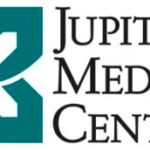A nationally coordinated and integrated blood supply system needs competent and committed leadership and an appropriate budget to allow accessibility and affordability of hemotherapy, based on a proper and documented needs assessment. The financing system should be an integral part of a national health financing system based on cost recovery and a healthy insurance policy accessible and affordable for all citizens.
The framework of such an integrated blood supply system could be based on seven key elements:
1. Organization and structure, including the necessary infrastructure to be strengthened and further developed. This element includes development of an appropriate and implementable formal regulatory structure, development of a system of regional blood centers based on a sufficient economy of scale to become cost-effective. These institutions preferably should be part of a nationally coordinated blood transfusion service responsible for policy making, design of necessary strategies, annual planning, development of a national quality and quality management system based on internationally accepted standards and product specifications. Such quality and quality management system will have a uniform documentation system, which allows for the possibility of instituting a nation-wide ICT system for data management. The organization should have sufficient autonomy to operate its services. As the organization manufactures products (collection, processing and testing, storage and distribution) for clinical use, it is automatically product liable and should therefore operate independently from hospitals. Hospitals use the products for specific hemotherapy in patients and therefore have the legal obligation to protect consumer rights, which cannot be combined with product liability under the same final responsibility (conflict of interest). Another aspect of this first element is the need to develop appropriate and cGMP compliant working facilities, that guarantee a working environment that allows high quality operations to be performed by staff.
2. Clinical use needs full attention to develop evidence based transfusion practices all over the country. That means assessment of current clinical practices and development of an in-hospital transfusion quality and quality management system. Hospitals will be supplied by regional procurement centers (blood centers) with a working stock that will be based on an inventory of actual needs per discipline – pediatrics, obstetrics, surgery and traumatology and hemato-oncology. The development of a well functioning clinical interface will lead to the change from the currently prevalent supply driven system to a demand driven system, based on mutual respect and understanding and key to the supplier-customer principle of quality operations.
3. Processing and testing of all units of blood collected will allow an efficient use of the blood collected and contribute to rational use of blood through component therapy. Testing for the key TTI markers (HIV, HBV, HCV and Syphilis) needs to be instituted with appropriate and standardized technology and methodology. Here, economies of scale are paramount to guarantee consistency of performance and cost containment. Where epidemiology indicates, additional tests can be considered such as brucellosis, Chagas or malaria. As screening tests focus on sensitivity, a system for confirmation needs to be developed at national level – a reference laboratory that also could perform test kit and reagent validation before implementation. Along with the development of component production, in-process quality control of the produced half and finished products (testing for standardized and uniform product specifications) will be part of the program.
4. Collection of source material – human blood or plasma – from voluntary non-remunerated and preferably regular blood donors, motivated and mobilized from identified low-risk groups in the community. This requires development of public awareness based on social marketing. The currently prevalent supply driven system of blood floating on family and replacement donations, needs to be developed into a demand driven system, which means the availability of motivated potential donors willing to be mobilized to allow a balanced blood stock that is managed and the development of a contingency plan. Donor selection needs to be standardized and adjusted to internationally recommended minimum requirements for donor suitability.
|
Teaching setting in the Uganda Blood Transfusion Service (UBTS), Kampala, Uganda.
|
5. Education (teaching and training) is the cornerstone of capacity building. A national assessment and inventory of available education (institutions, curricula) needs to be carried out to allow the development of an effective approach towards capacity building and human resource development at all levels involved. The in-country approach will focus on leadership development (senior and middle management) and development of operational competencies (professional knowledge and skills) through various education methodologies to allow larger groups of staff to benefit.
6. Monitoring and evaluation follows the implementation of a national quality and quality management system based on uniform documentation of what is being done, both at management level (management information system) as well as at operational level through an automated data processing system (ICT) with communication between all centers and the national Head Quarter and Ministry of Health. Use of simple statistical evaluation technology such as statistical process control (SPC) and application of Six Sigma will allow proper benchmarking focused on improvement through trend analysis. A nationwide compatible ICT system would allow proper quality management through coordinated monitoring and evaluation of uniform data collected through regional centers and hospitals (vein-to-vein).
7. Sustainability is not only dependent on financial resources, but comprehensively relates to all six elements as described above – organizational structure and infrastructure, competent and adequate human resources, a reliable and regular voluntary blood donor panel, standardized procurement process, evidence based rational use of blood components and alternatives, and quality assurance through proper monitoring of set indicators and their evaluation through benchmarking focused on improvement. This follows the principle of the Deming cycle of improvement – plan (policy and strategies), do (implementation of managerial and operational processes), check (monitoring of indicators and accurate data collection through documentation), act (evaluation of collected data and benchmarking).



























